What makes a great combo:
There were a few main reasons that a particular combination did not produce great results. The following is a description of the factors that could cause a combination to fail.
The bulb did not perennialize
The timing of the growth of the perennial and bulb were not compatible.
The size of the perennial and bulb were not compatible.
Number of bulbs planted
Spacing of bulbs around the perennial
Planting Depth
- The bulb did not perennialize. This could happen if the bulb was too tender for the climate, it was planted too shallow or too deep, the perennial out-competed the bulb for water, sun, and/or nutrients, or the bulbs planted were low quality.
Examples of this in our trial were:
Tulip Capri 2005
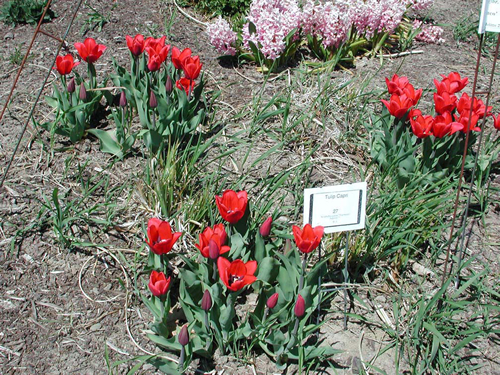
Tulip Capri 2006
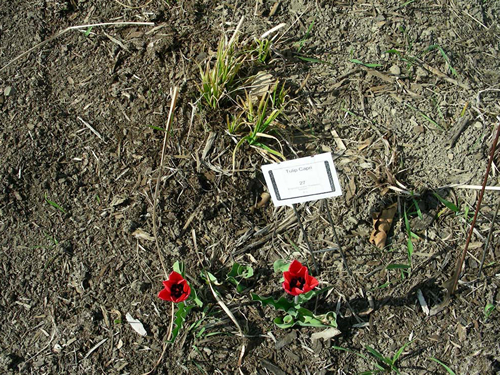
Back to Top
- The timing of the growth of the perennial and bulb were not compatible. The perennial may not send out new growth fast enough to cover browning foliage, or the perennial may grow too fast and cover the bulb foliage before it has sufficient time to refill its bulb. In some cases, the bulbs bloom when the old, dead, or damaged foliage from the winter is highly visible.
Examples of this in our trial were the
ugly foliage of Bergenia when tulip is blooming

ugly foliage of Carex when tulip is blooming

Asclepias not growing enough to cover Narcissus leaves
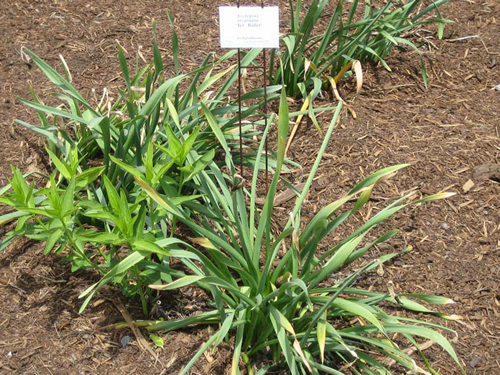
Aruncus dioicus not growing enough to cover Scilla leaves

Back to Top
- The size of the perennial and bulb were not compatible. This is a problem when the perennial never gets large enough to cover the brown bulb foliage.
Examples of this in our trial were:
Phuopsis stylosa with Narcissus 'Cheerfulness'

Aurinia saxatilis with Hyacinth 'Atlantic'

Anemone blanda 'White Splendor' with Campanula perscifolia 'Grandiflora Alba'
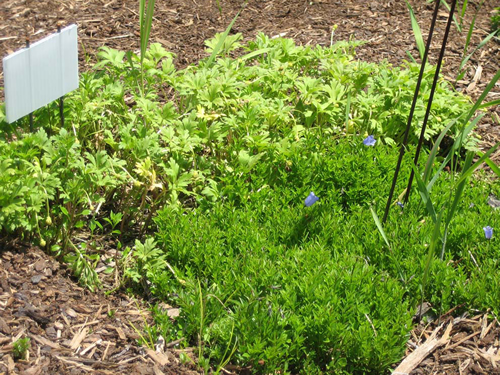
Allium giganteum 'Gladiator' with Geranium phaeum 'Purpureum'
Back to Top
- Number of bulbs planted If too few bulbs are planted, it may not create the desired effect, and if too many bulbs are planted, they are less likely to perform well because of too much competition for resources. Too many bulbs may also limit perennialization
Example of too many bulbs planted:
Hyacinth 'Blue Jacket' with Brunnera 'Variegata'

too few bulbs planted:
Fritillaria meleagris mix with Carex muskamensis 'Little Midge'
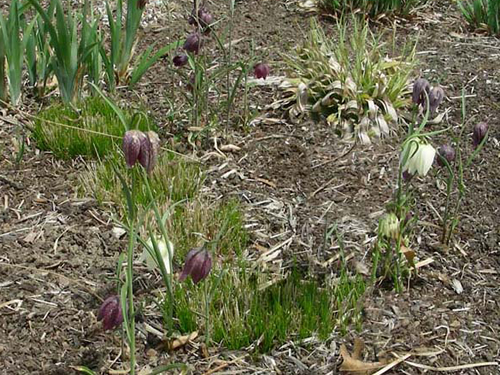
Back to Top
- Spacing of bulbs around the perennial For particularly large, aggressive, or fast-spreading perennials, it is recommended to plant the bulbs farther away from the perennial. If the perennial is late to leaf out or is compact, the bulbs should be planted relatively close to the perennial. This will help with hiding of brown foliage as well as the perennialization of the bulbs.
Example of this were:
Hyacinth 'Blue Jacket' with Brunnera 'Variegata'

Hyacinth 'Pink Pearl' with Anemone sylvestris
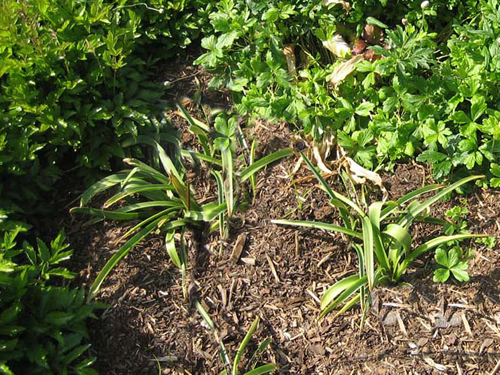
Muscari armeniacum with Iris siberica 'Painted Desert'
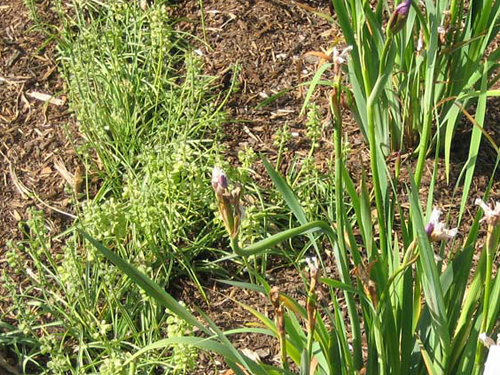
Back to Top
- Planting Depth The depth at which the bulb is planted can determine its ability to perennialize, and how quickly or slowly it will bloom. Generally a bulb planted deeper will bloom later than a shallowly planted bulb.
Back to Top
|















